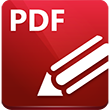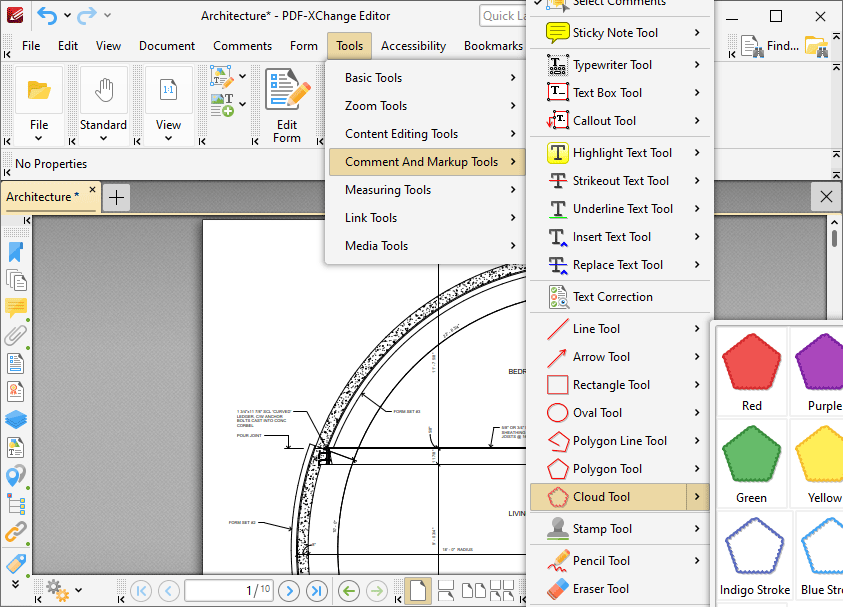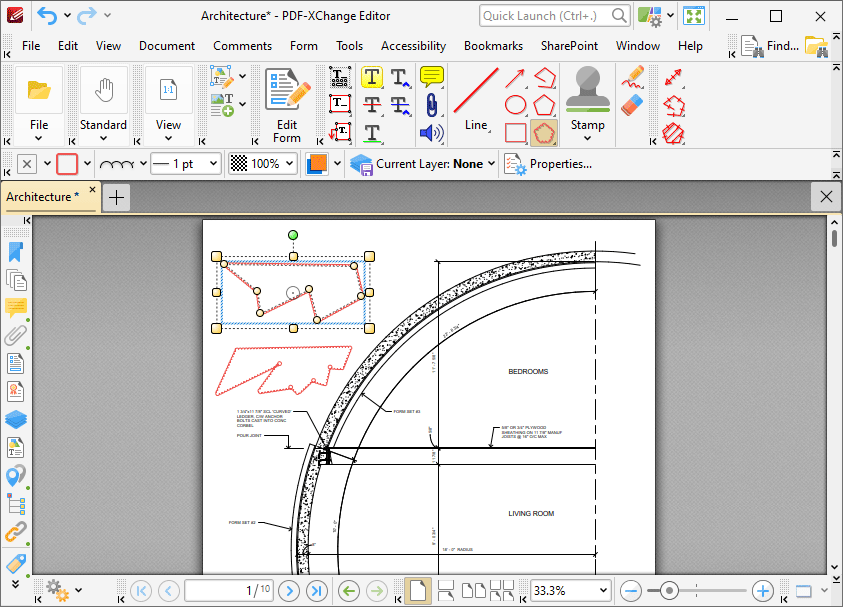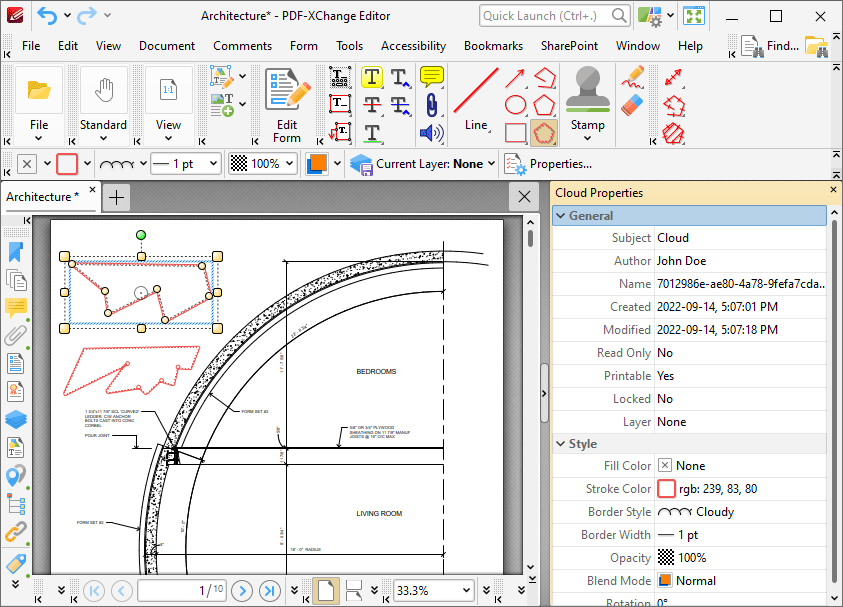 Cloud Tool
Cloud Tool
Click Cloud Tool to add cloud annotations to documents:

Figure 1. Tools Tab Submenu, Cloud Tool
When the Cloud Tool is selected, the pointer becomes a crosshairs icon. Click to designate the starting point of the annotation. Drag the crosshairs to the location at which the first line is to be made. Click again to define the first line of the annotation. Repeat the process until the desired shape is complete and then double-click to define the final point:

Figure 2. Cloud Tool Example
The upper cloud annotation has just been placed, which means editing options are enabled:
•Click and drag the outer control points to resize cloud annotations.
•Click and drag the inner control points to reposition them.
•Click and drag cloud annotations to reposition them. The circle at the center can also be used for this purpose.
•Click and drag the green control point at the top to rotate cloud annotations. Hold down Shift to rotate at increments of fifteen degrees.
•Use the arrow keys to reposition cloud annotations. Hold down Shift to move at an increased increment.
•Use the editing aids detailed here to assist in the precise placement of cloud annotations.
•Right-click cloud annotations for further options. See here for an explanation of these options.
•When the Cloud Tool is selected, the following options are enabled in the Properties Toolbar:
•Fill Color determines the fill color of cloud annotations.
•Stroke Color determines the color of cloud annotation borders.
•Border Style determines the style of cloud annotation borders.
•Border Width determines the width of cloud annotation borders.
•Opacity determines the level of transparency in cloud annotations.
•Blend Mode determines how cloud annotations blend with underlying content. These options are explained here.
•Keep Selected determines whether or not the Cloud Tool remains selected after a cloud annotation has been created. If this option is enabled then the tool will remain selected and can be used to create several cloud annotations consecutively. If this option is not enabled then PDF-XChange Editor will revert to the designated default tool immediately after creating a cloud annotation.
•Exclusive Mode simplifies the process of using the Cloud Tool. When Exclusive Mode is enabled, the pointer ignores all interactive elements of documents other than base content. This makes it possible to create cloud annotations on areas that overlap with other content without the risk of accidentally selecting undesired items. When Exclusive Mode is disabled, the pointer recognizes and interacts with all underlying elements in the usual manner.
•Click Properties to view/edit additional cloud annotation properties, as detailed below.
•Note that several default styles are available for cloud annotations, as detailed in (figure 1). Click to select alternative annotation styles. The Comment Styles Palette can be used to save customized cloud annotation styles for subsequent use. Right-click the Cloud icon in the Comment Toolbar to view existing styles and/or access the Comment Styles Palette.
•The Commenting section of the Preferences dialog box can be used to view/edit preferences for comments.
Cloud Properties Pane

Figure 3. Cloud Properties Pane
•Subject is the name of the cloud annotation, as referenced in the Comments pane.
•Author is the name of the user that created the cloud annotation.
•Name is the unique name of the cloud annotation, as referenced within the application.
•Created is the date and time at which the cloud annotation was created.
•Modified is the date and time at which the cloud annotation was last modified.
•Read Only is the read only status of the cloud annotation. If this property is enabled then users cannot interact with the annotation. Please note that it is necessary to use JavaScript to change the value of this property.
•Printable is the print status of the cloud annotation. If this property is enabled then the annotation is printed with the document. If this property is not enabled then the annotation is not printed.
•Locked is the locked status of the cloud annotation. If this property is enabled then the annotation cannot be deleted and its properties (including its position and size) cannot be modified by users.
•Layer specifies the optional content layer to which the cloud annotation belongs. Further information about layers is available here.
•Fill Color determines the color of the line ending style used at the start of the cloud annotation. The line ending property is detailed below.
•Stroke Color determines the color of the cloud annotation.
•Border Style determines the style of the annotation.
•Border Width determines the width of the annotation.
•Opacity determines the level of transparency in the cloud annotation.
•Blend Mode determines how cloud annotations blend with overlapping content. These options are explained here.
•Rotation determines the degrees of rotation of the cloud annotation.